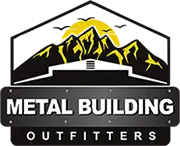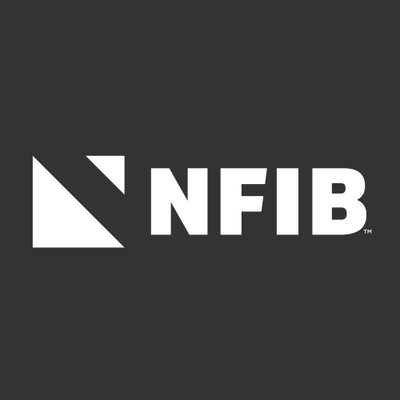
Contents
Did you know that selecting the right metal type goes beyond steel or aluminum when considering designing your own metal RV shelter? There are important factors to weigh when it comes to durability and cost-effectiveness. You’ll want to pick the most suitable metal type for your shelter’s longevity and budget. Stay tuned for the step-by-step guide to crafting your personalized metal RV shelter that meets your needs and preferences.
Key Takeaways
- Consider RV dimensions and storage needs for accurate sizing.
- Choose a durable metal type: Steel, Aluminum, or Galvanized.
- Customize roof style for functionality and aesthetics.
- Personalize with optional features like color and security upgrades.
- Ensure precise measurements and clear communication for ordering and installation.
Selecting the Right Size
When choosing the appropriate size for your metal RV shelter, consider your vehicle’s dimensions and any additional storage needs. Proper space utilization is essential to ensure your RV fits comfortably within the shelter without obstructions. Measure your RV’s length, width, and height, including any attachments like ladders or racks, to determine the minimum dimensions required.
To maximize space utilization, factor in the extra room you may need for storage or maintenance activities. Consider if you want space for outdoor furniture, tools, or recreational gear within the shelter. Efficient planning will help you maximize your metal RV shelter without feeling cramped.
Structural integrity is key when selecting the size of your metal RV shelter. Ensure that the shelter isn’t only wide and tall enough for your RV but sturdy enough to withstand environmental factors like wind and snow loads. Opt for a size that allows for proper ventilation to prevent moisture buildup and potential damage to your vehicle.
Choosing the Metal Type
To safeguard the durability and longevity of your metal RV shelter, the choice of metal type plays a critical role in providing the necessary strength and protection for your recreational vehicle. When choosing the metal type for your RV shelter, it is essential to consider factors such as durability, cost-effectiveness, coating options, and maintenance requirements.
To assist you in making an informed decision, here are some common metal options for RV shelters:
| Metal Type | Durability | Cost Effectiveness |
|---|---|---|
| Steel | High durability | Cost-effective |
| Aluminum | Good durability | Higher cost |
| Galvanized | Excellent durability | Moderate cost |
Steel is a popular choice due to its high durability and cost-effectiveness. Aluminum, while slightly more expensive, also offers good durability. Galvanized metal provides excellent durability but at a moderate cost. Each metal type has its advantages, so consider your budget and desired level of protection when selecting.
Additionally, remember to assess the coating options available for your chosen metal type and the maintenance requirements to ensure that your RV shelter remains in top condition for years to come.
Customizing Roof Style
To enhance the functionality and aesthetics of your metal RV shelter, consider customizing the roof style to suit your specific needs and preferences. When customizing the roof style of your metal RV shelter, you can choose from various color options to match your existing structures or personal tastes. Opting for a color that complements your surroundings can enhance the overall appeal of your RV shelter, creating a cohesive look on your property.
In addition to color options, customizing the roof style of your metal RV shelter allows for personalization that can make your shelter unique to you. Whether you prefer a classic gable roof design or a modern flat roof style, the choice is yours to reflect your style and preferences.
When selecting a roof style, it’s also essential to consider the practical aspects. The roof contributes to the overall aesthetics and plays a significant role in providing weather protection and ensuring durability. Opting for a roof style that can withstand various weather conditions, such as heavy rain or snow, is vital for the longevity of your RV shelter. Additionally, choosing a durable roof style can help maintain the structural integrity of your shelter for years to come.
Adding Optional Features
Consider enhancing your metal RV shelter’s functionality and customization by exploring adding optional features tailored to your specific needs and preferences. When designing your RV shelter, here are some key optional features to take into account:
Color Options:
Personalize your metal RV shelter by selecting from a range of color options. Whether you prefer a classic white, a rustic red, or a sleek gray, choosing the right color can complement your existing property or make a bold statement. Coordinate with your surroundings or make your RV shelter stand out—it’s up to you.Foundation Choices:
The foundation of your metal RV shelter is essential for its stability and longevity. Depending on your location, budget, and personal preferences, consider options such as a concrete slab, gravel, or asphalt. Each type of foundation offers different benefits, so select one that best suits your needs.Security Upgrades:
Enhance the security of your RV shelter by adding features like reinforced doors, security cameras, or motion-sensor lights. These additions can provide peace of mind and protect your valuable RV and belongings from theft or vandalism.Gutter Systems:
Installing a gutter system can help manage rainwater runoff, prevent erosion around your RV shelter, and direct water away from the structure. This simple addition can prolong the life of your shelter and protect it from water damage.
Ordering and Installation
Provide precise measurements and clear specifications to the manufacturer for efficient ordering and installation of your metal RV shelter. When starting the ordering process, it’s important to have accurate dimensions of the area where the shelter will be installed. Consider the height, width, and length needed to accommodate your RV comfortably. Additionally, consider any optional features you want to include, such as doors, windows, or ventilation systems, as these will impact your shelter’s overall design and functionality.
During the ordering process, communicate clearly with the manufacturer to ensure that all your requirements are understood. Provide detailed drawings or sketches, if necessary, to convey your vision accurately. Confirm the timeline for production and delivery to plan the installation accordingly.
When it comes to installation tips, ensure that the site where the metal RV shelter will be placed is level and clear of any obstacles that could hinder the assembly process. Follow the manufacturer’s instructions carefully and prepare the necessary tools for installation. It’s advisable to have a team to assist with the assembly, especially for larger shelters, to streamline the process and ensure everything is put together correctly. Regular shelter maintenance will also prolong its lifespan and protect your RV for years.
Review
Now that you have completed the design process for your metal RV shelter, it’s important to remember that attention to detail and precision are key to a successful project.
By following these steps and ensuring accurate measurements and specifications, you can create a durable, personalized shelter that meets your needs.
Take the time to investigate the truth of each theory and make informed decisions to achieve the best results.
Recent Posts
Top Eco-Friendly Tips for Metal Building Construction
Have you ever wondered how metal building construction can align with eco-friendly practices? By exploring
What Techniques Enhance Energy Efficiency in Metal Buildings?
To improve energy efficiency in metal buildings, you need to encompass a variety of methods.
Top Tips for Energy Efficient Custom Metal Structures
When aiming to maximize the energy efficiency of your custom metal structures, it’s crucial to


